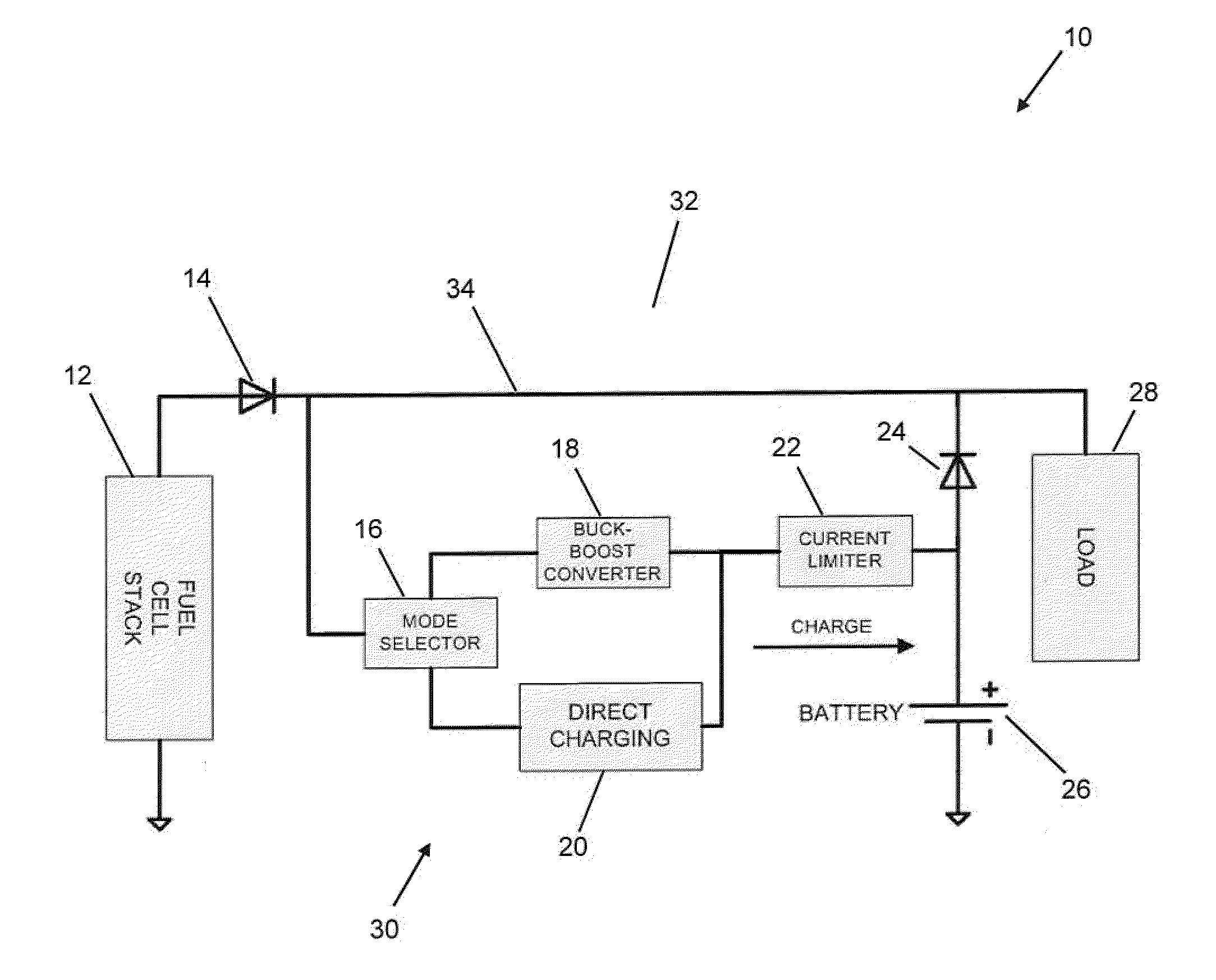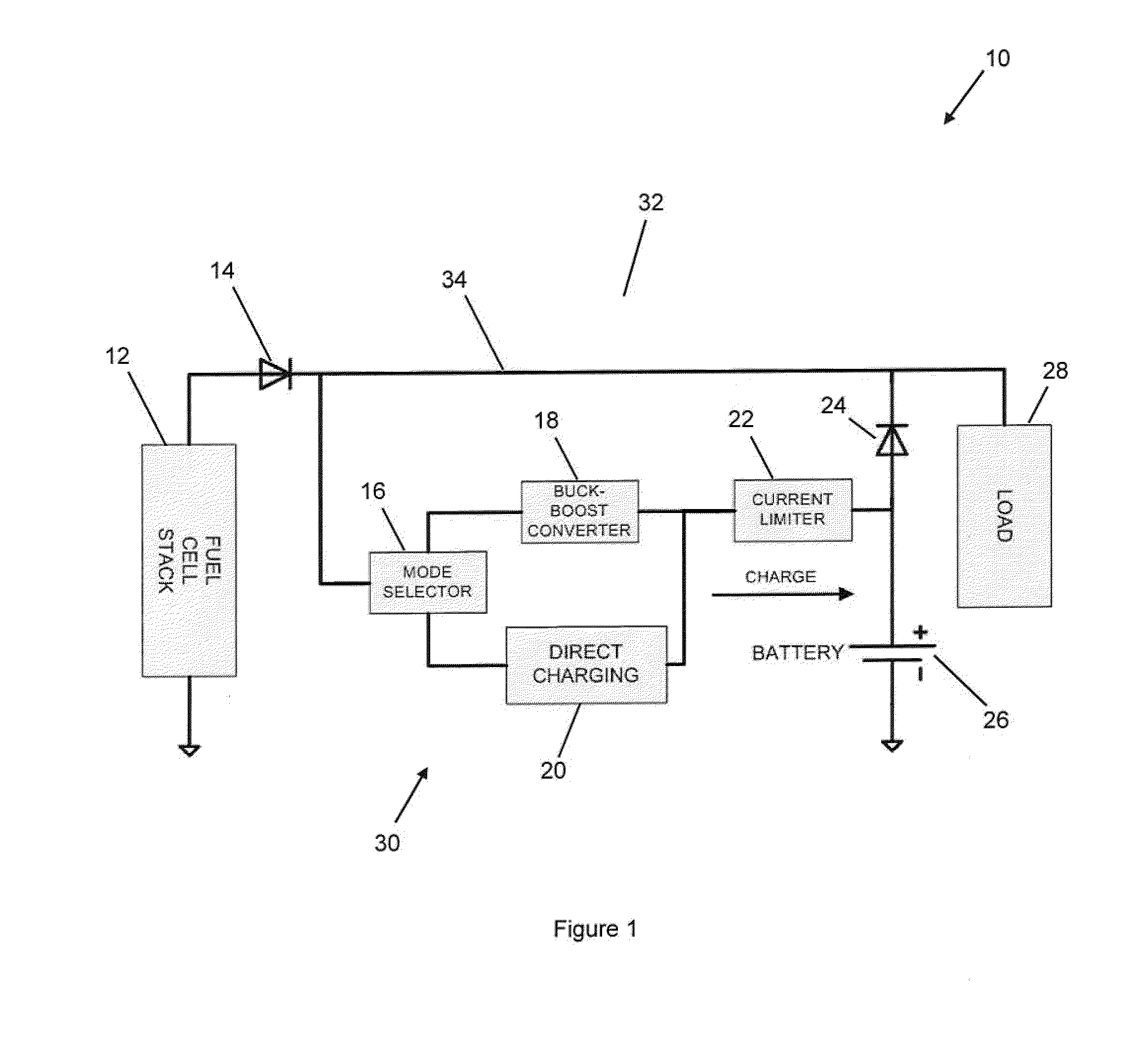Passive power management and battery charging for a hybrid fuel cell / battery system
a hybrid fuel cell and battery technology, applied in the field of electric fuel cells, can solve the problems of system weight, volume and efficiency, loss associated, % efficiency, etc., and achieve the effect of low internal resistan
- Summary
- Abstract
- Description
- Claims
- Application Information
AI Technical Summary
Benefits of technology
Problems solved by technology
Method used
Image
Examples
Embodiment Construction
[0043]Referring now to FIG. 1, a device for passively managing a fuel cell / hybrid power system is shown generally at 10. The device 10 comprises a fuel cell stack 12 that is electrically connected in a parallel configuration to a battery 26. The battery 26 has low internal resistance.
[0044]Still referring to FIG. 1, the device 10 includes a passive control circuit 30 which is connected between the fuel cell stack 12 and the battery 26. The circuit 30 comprises a mode selector 16, a buck-boost DC / DC converter circuit 18, a direct charge circuit 20, and a current limit circuit 22. The mode selector 16 passively selectively electrically connects either the buck-boost converter circuit 18 or the direct charge circuit 20 to the battery 26. A current limit circuit 22 electrically connects the buck-boost converter 18 or the direct charger 20 to the battery 26. The mode selector 16, the buck-boost converter circuit 18, the direct charge circuit 20, and the current limit circuit 22 are elect...
PUM
 Login to View More
Login to View More Abstract
Description
Claims
Application Information
 Login to View More
Login to View More - R&D
- Intellectual Property
- Life Sciences
- Materials
- Tech Scout
- Unparalleled Data Quality
- Higher Quality Content
- 60% Fewer Hallucinations
Browse by: Latest US Patents, China's latest patents, Technical Efficacy Thesaurus, Application Domain, Technology Topic, Popular Technical Reports.
© 2025 PatSnap. All rights reserved.Legal|Privacy policy|Modern Slavery Act Transparency Statement|Sitemap|About US| Contact US: help@patsnap.com


